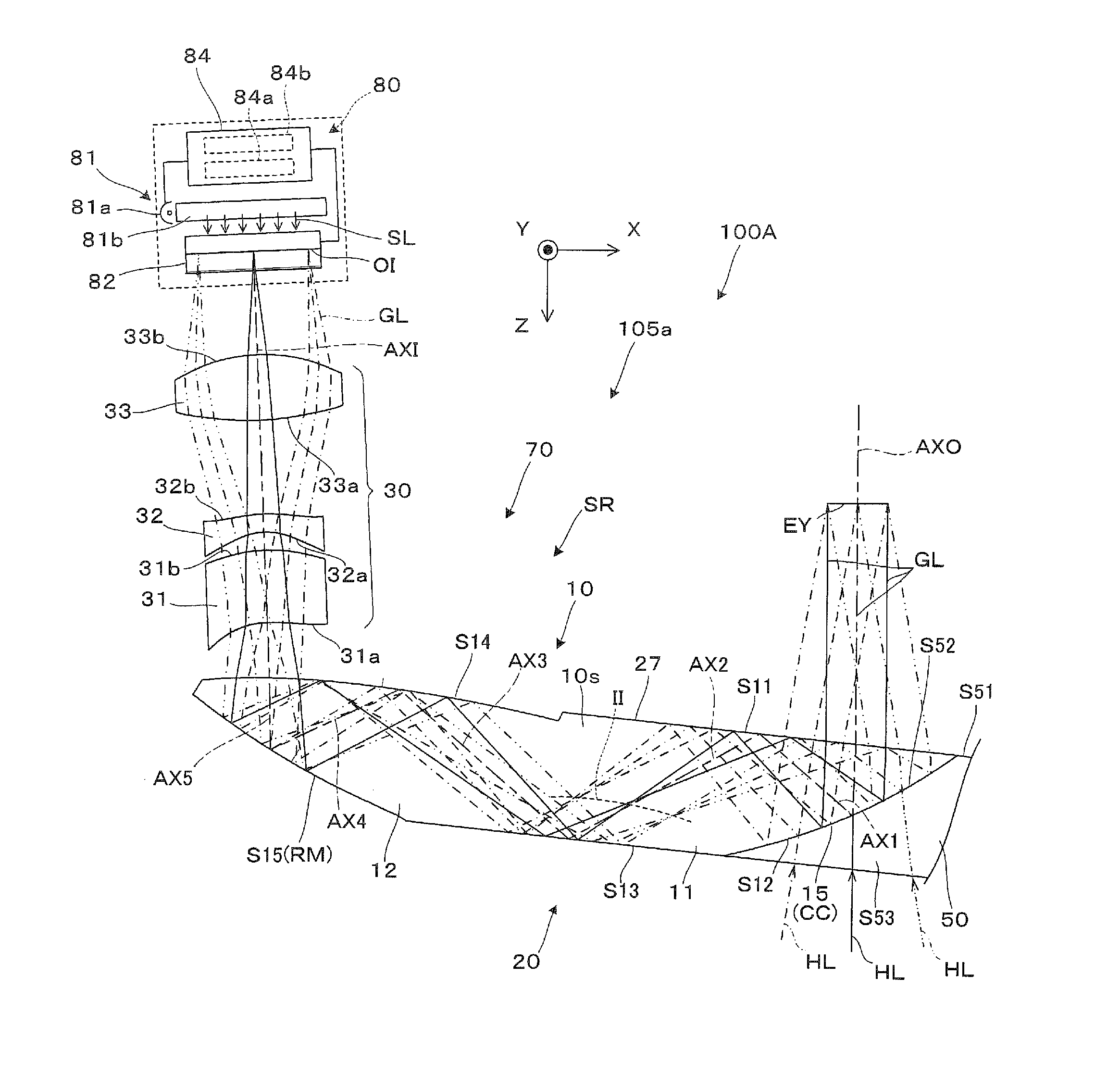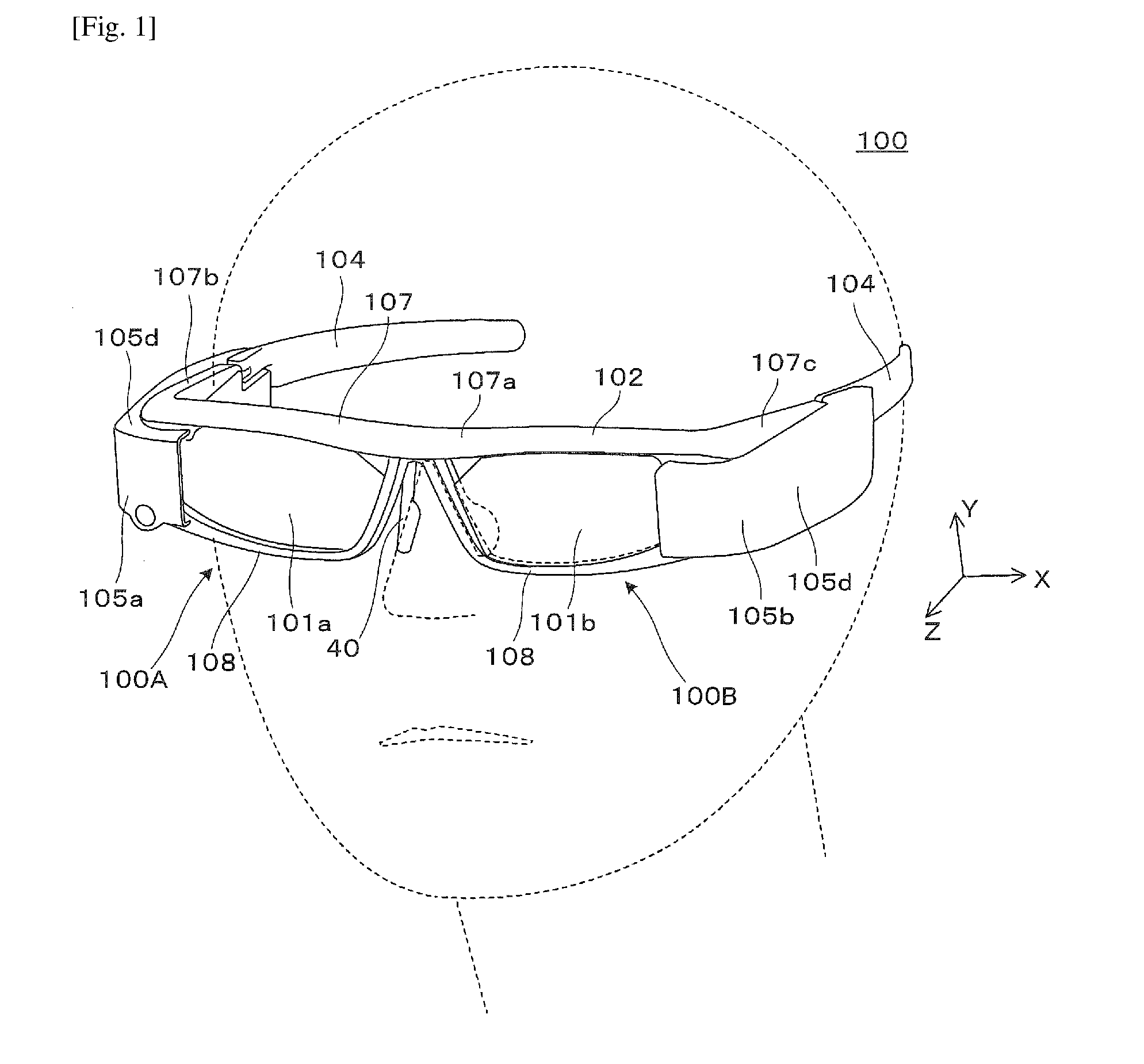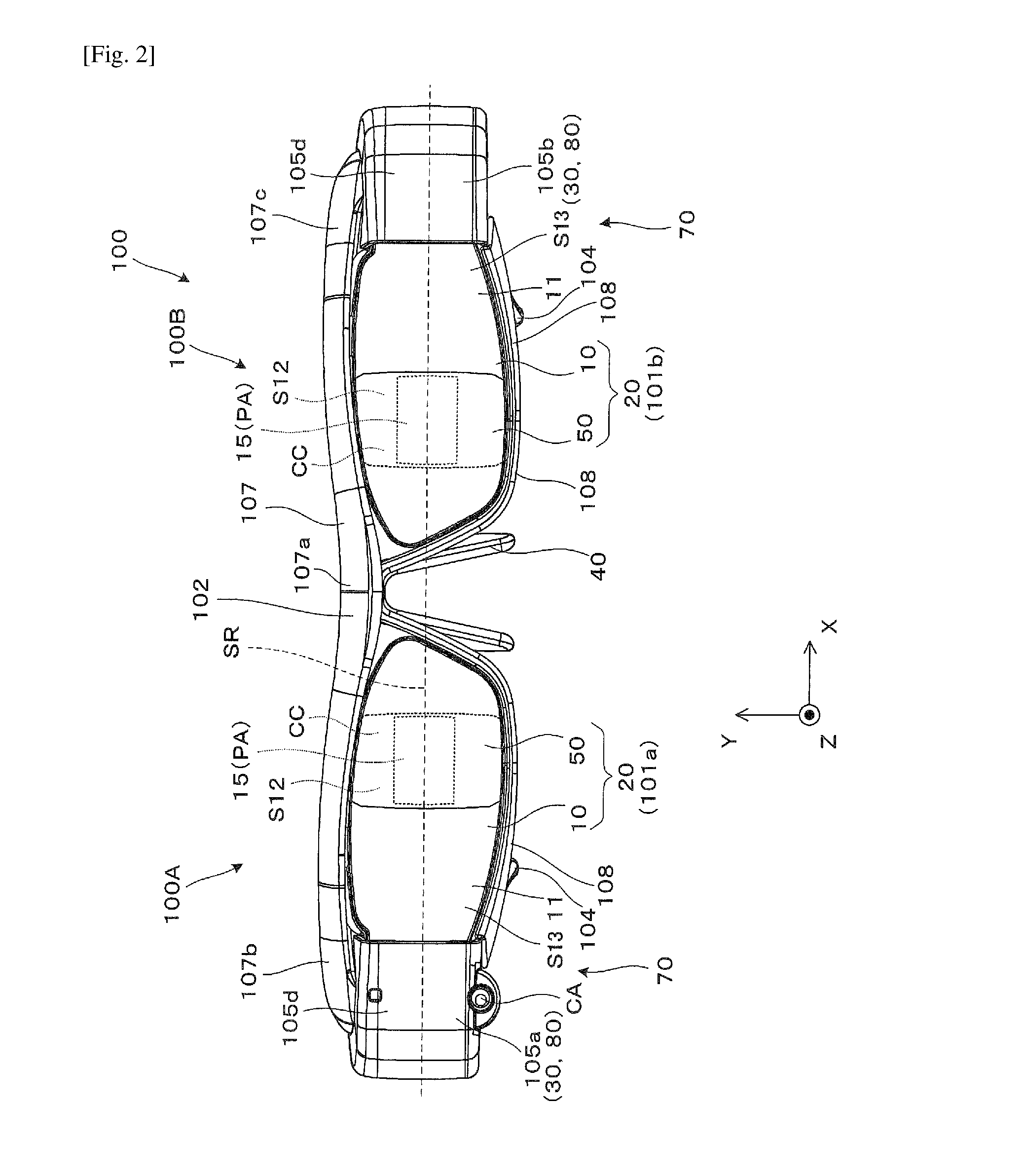Virtual image display apparatus
a virtual image and display device technology, applied in the field of virtual image display devices, can solve the problems of obstructing the reduction in size and weight, affecting the display effect of external scenes, and affecting the display effect of external scenes, and achieve the effect of wide viewing angle and high performan
- Summary
- Abstract
- Description
- Claims
- Application Information
AI Technical Summary
Benefits of technology
Problems solved by technology
Method used
Image
Examples
example 1
[0131]In a projection see-through device of Example 1, data on an optical surface constituting a light guide member and a projection lens (projection optical system) is shown in Table 1. Here, a light beam reversed with respect to the advancement of video light from the position of the eye is traced, and measurement is performed. For example, FFS1 means the first surface S11, FFS2 means the second surface S12, and FFS3 means the third surface S13. However, FFS6 means the lens surface 31a which is the emission surface of the first lens of the projection lens. ASP1 means the incidence surface of the first lens of the projection lens, not the emission surface, and ASP2 means the emission surface of the second lens.
TABLE 1NoTypeRTNdVd1SPH∞20.002FFS1—5.801.52555.953FFS2—−5.801.52555.954FFS1—10.461.52555.955FFS3—−22.701.52555.956FFS4—11.901.52555.957FFS5—−11.901.52555.958FFS4—−4.009FFS6—−6.001.52555.9510ASP112.481−1.5011ASP24.805−1.501.58529.9012ASP311.556−7.8613ASP4−21.429−5.501.52555.95...
example 2
[0138]In a projection see-through device of Example 2, data on an optical surface constituting a light guide member and a projection lens is shown in Table 5.
[0139]In a projection see-through device of Example 2, data on an optical surface constituting a light guide member and a projection lens (projection optical system) is shown in Table 5. FFS7 means the lens surface 31a which is the emission surface of the first lens of the projection lens. ASP1 means the incidence surface of the first lens of the projection lens, not the emission surface, and ASP2 means the emission surface of the second lens.
TABLE 5NoTypeRTNdVd1SPH∞20.002FFS1—4.801.52555.953FFS2—−4.801.52555.954FFS1—8.001.52555.955FFS3—−14.201.52555.956FFS4—8.701.52555.957FFS5—−7.001.52555.958FFS6—−2.009FFS7—−3.001.52555.9510ASP13.231−1.5011ASP22.180−1.501.58529.9012ASP34.010−7.1813ASP4−6.744−5.001.52555.9514ASP5−13.372−3.0015SPH∞−1.441.45867.8216image∞surface
[0140]In regards to the optical surface in the light guide member co...
example 3
[0145]In a projection see-through device of Example 3, data on an optical surface constituting a light guide member and a projection lens (projection optical system) is shown in Table 9. As shown in FIG. 12, in Example 3, the lens surface 32b which is the incidence surface of the second lens 32, not the first lens 31, in the projection lens 30 is a non-axisymmetric aspheric surface, and FFS6 means the lens surface 32b. For example, while ASP1 means the incidence surface of the first lens of the projection lens and ASP2 means the incidence surface of the first lens, ASP4 means the emission surface of the third lens, not the incidence surface of the second lens.
TABLE 9NoTypeRTNdVd1SPH∞20.002FFS1—5.501.52555.953FFS2—−5.501.52555.954FFS1—9.001.52555.955FFS3—−14.501.52555.956FFS4—9.501.52555.957FFS5—−9.501.52555.958FFS4—−2.009ASP1−7.938−5.001.52555.9510ASP26.561−1.0011ASP34.480−1.501.58529.9012FFS6—−6.1013ASP4−9.941−6.001.52555.9514ASP529.300−5.0015SPH∞−1.441.45867.8216image∞surface
[0146...
PUM
 Login to View More
Login to View More Abstract
Description
Claims
Application Information
 Login to View More
Login to View More - R&D
- Intellectual Property
- Life Sciences
- Materials
- Tech Scout
- Unparalleled Data Quality
- Higher Quality Content
- 60% Fewer Hallucinations
Browse by: Latest US Patents, China's latest patents, Technical Efficacy Thesaurus, Application Domain, Technology Topic, Popular Technical Reports.
© 2025 PatSnap. All rights reserved.Legal|Privacy policy|Modern Slavery Act Transparency Statement|Sitemap|About US| Contact US: help@patsnap.com



